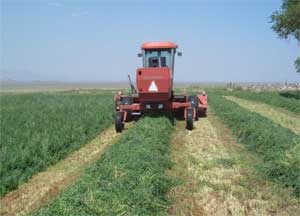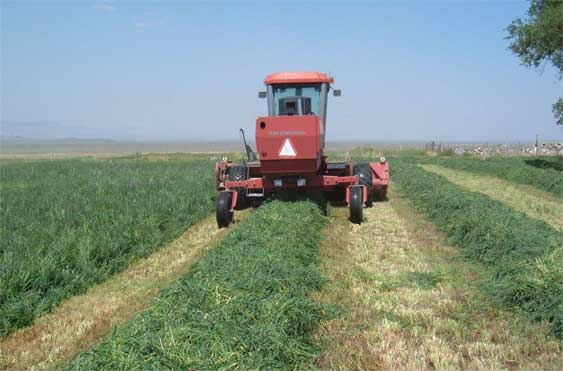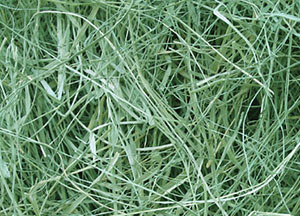Cutting Straight to The Truth
Straight talk about hay cuttings.
A percentage of hay purchasers have a preference on cutting. Whether you do or not, let's look at some facts that may change or influence your view of cutting. Cutting with hay refers to the number of times in the growing season that a given crop or field is cut and harvested. The number of cuttings per year varies from 3-10 depending on climate. Farms located in higher elevations typically get 3-4 cuttings while warmer climates allow for nearly year-round farming and can get as many as 10. Cuttings do have a few distinct differences that affect quality. For example, the first cutting will have more weeds or undesirable, unwanted plants than subsequent cuttings due to the "annual" trait of many plants. In other words, once the weed is cut with the first harvest, it will not grow back until the next year. In addition to cutting, here are a few of the other factors that influence hay quality:
- Maturity of plants at time of harvest
- Condition/nutrients in the soil
- Amount and kind of fertilizer
- Length of days
- Amount of direct sunlight
- Temperature during the growing period
- Insecticides/herbicides
- Presence or lack of rodents
- Rain/ weather conditions during the drying period
- Moisture content at the time of bailing
There are more but the point is there are many.
Arguably, the single most influential element is maturity at the time of harvest. The young and immature plant is packed with nutrients and lacks fiber to the extent that horses can have digestive disruptions such as diarrhea and colic. The older plant lacks essential nutrients and has excess fiber including non-digestible fiber and therefore has diminished value.
So, what does this mean to you and what can you do about it? You can learn to recognize signs of maturity or lack thereof such as stem size, softness, and amount of bloom when evaluating hay. A farmer or experienced dealer is a good resource to learn how to identify maturity.
While the cutting, along with a plethora of other factors, affects quality, maturity is key. It's common to get hung up on cutting and disregard more important considerations. Don't let that be you.
Also with hay, remember the More Better Rule:
"When you find a grouping of hay that works for you and your horse, buy all you can afford and all you have storage for."




